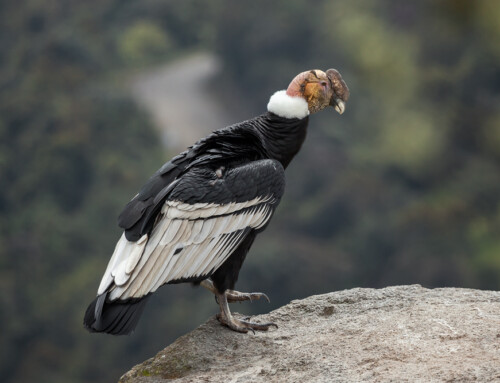Carrion isn’t the only thing vultures scavenge; they exploit the superior foraging abilities of eagles to find their food
LINKED PAPER
Vultures acquire information on carcass location from scavenging eagles. Kane, A., Jackson, A.L., Ogada, D.L., Monadjem, A. and McNally, L. 2014. Proceedings of the Royal Society of London B: Biological Sciences . DOI: 10.1098/rspb.2014.1072. VIEW
Scavengers can never predict where their next meal is going to come from because they’re not the ones doing the killing. It would prove extremely difficult to forecast when and where the next animal is going to be overcome with disease or brought down by a predator. Species that rely on carrion have instead evolved a suite of workarounds to this problem. For instance, the vultures, who are obligate scavengers, have the ability to soar over huge distances at a low energetic cost (Ruxton & Houston 2004). In doing so they increase the probability that they’ll fly over a carcass during their foraging routine. Vultures also tend to be social, which allows them to piggy back on the successful discoveries of their own kind (Cortés-Avizanda et al 2014).
But many other species occasionally scavenge and their discoveries don’t go unnoticed by vultures. In collaboration with researchers in Kenya, Swaziland, Ireland and Scotland we found that vultures take cues from eagles in order to find carrion more efficiently (Kane et al 2014). We observed the arrival times of the avian scavenging community in Kenya at experimental carcasses (Ogada et al 2012) and found that vultures consistently arrived soon after an eagle had landed. The principal actors were the African White-backed Vulture (Gyps africanus), Ruppell’s Vulture (Gyps rueppellii), the Tawny Eagle (Aquila rapax) and the Steppe Eagle (Aquila nipalensis).

The eagles arrive first because they fly earlier in the morning before the sun can generate thermals strong enough to support a vulture (Pennycuick 1998). The eagles also have keener vision allowing them to spot a carcass at a greater distance. But once they land, the larger, social vultures can readily displace the smaller, solitary eagles.

© Yathin S Krishnappa
In game theory, the field concerning the strategies employed by animals in their interactions with each other, this is termed a producer-scrounger game (Vickery et al 1991). The vultures scrounge information from the eagles who have produced information on the location of the carrion. One question that arises from these observations is what’s in it for the producer if they get their food stolen from them? This is where game theory is useful and we used it to develop a model to show how the dynamics between these birds can persist over evolutionary time for two reasons.
Firstly, the eagle can claim a finder’s fee, that is a piece of food from the carcass they are guaranteed to before the dominant vultures arrive. This morsel can’t be too big because it would mean there’d be little left for the vultures to eat. And second, the scroungers must be dominant to the producers. A situation involving a ferocious eagle who could take on all comers would soon result in evolution selecting against scrounging vultures because they couldn’t get near the food.

In our final model we were able to demonstrate how vulture foraging success improves with the number of eagles in the habitat even if this is a fraction of the total vulture population. Unfortunately, eagle numbers are declining along with vultures due to poisoning, habitat loss and poaching (Ogada & Keesing, 2010; Ogada et al 2015). Such is the nature of this producer-scrounger system, vultures will suffer all the more as their pathfinders disappear.
References and further reading
Cortés-Avizanda, A., Jovani, R., Donázar, J.A. and Grimm, V. 2014. Bird sky networks: How do avian scavengers use social information to find carrion? Ecology 95(7): 1799-1808. View
Duriez, O., Kato, A., Tromp, C., Dell’Omo, G., Vyssotski, A.L., Sarrazin, F. and Ropert-Coudert, Y. 2014. How cheap is soaring flight in raptors? A preliminary investigation in freely-flying vultures. PloS one 9(1): e84887. View
Hofbauer, J. and Sigmund, K. 2003. Evolutionary game dynamics. Bulletin of the American Mathematical Society 40(4): 479-519. View
Kane, A., Jackson, A.L., Ogada, D.L., Monadjem, A. and McNally, L. 2014. Vultures acquire information on carcass location from scavenging eagles. Proceedings of the Royal Society of London B: Biological Sciences 281(1793): 20141072. View
Kendall, C.J. 2013. Alternative strategies in avian scavengers: how subordinate species foil the despotic distribution. Behavioral Ecology and Sociobiology 67(3): 383-393. View
Kendall, C.J. 2014. The early bird gets the carcass: Temporal segregation and its effects on foraging success in avian scavengers. The Auk 131(1): 12-19. View
Ogada, D.L. and Keesing, F. 2010. Decline of raptors over a three-year period in Laikipia, central Kenya. Journal of Raptor Research 44(2): 129-135. View
Ogada, D.L., Torchin, M.E., Kinnaird, M.F. and Ezenwa, V.O. 2012. Effects of vulture declines on facultative scavengers and potential implications for mammalian disease transmission. Conservation Biology 26(3): 453-460. View
Ogada, D., Shaw, P., Beyers, R.L., Buij, R., Murn, C., Thiollay, J.M., Beale, C.M., Holdo, R.M., Pomeroy, D., Baker, N. and Krüger, S.C. 2015. Another continental vulture crisis: Africa’s vultures collapsing toward extinction. Conservation Letters 9(2): 89-97. View
Pennycuick, C.J. 1998. Field observations of thermals and thermal streets, and the theory of cross-country soaring flight. Journal of Avian Biology 29(1): 33-43. View
Ruxton, G.D. and Houston, D.C. 2004. Obligate vertebrate scavengers must be large soaring fliers. Journal of theoretical biology 228(3): 431-436. View
Spiegel, O., Getz, W.M. and Nathan, R. 2013. Factors influencing foraging search efficiency: why do scarce lappet-faced vultures outperform ubiquitous white-backed vultures? The American Naturalist 181(5): E102-E115. View
Vickery, W.L., Giraldeau, L.A., Templeton, J.J., Kramer, D.L. and Chapman, C.A. 1991. Producers, scroungers, and group foraging. American Naturalist 137(6): 847-863. View
Image credit
Featured image: Feeding vultures © Bernard Dupont | CC-BY-SA-2.0 via Wikimedia Commons
If you want to write about your research in #theBOUblog, then please see here.





